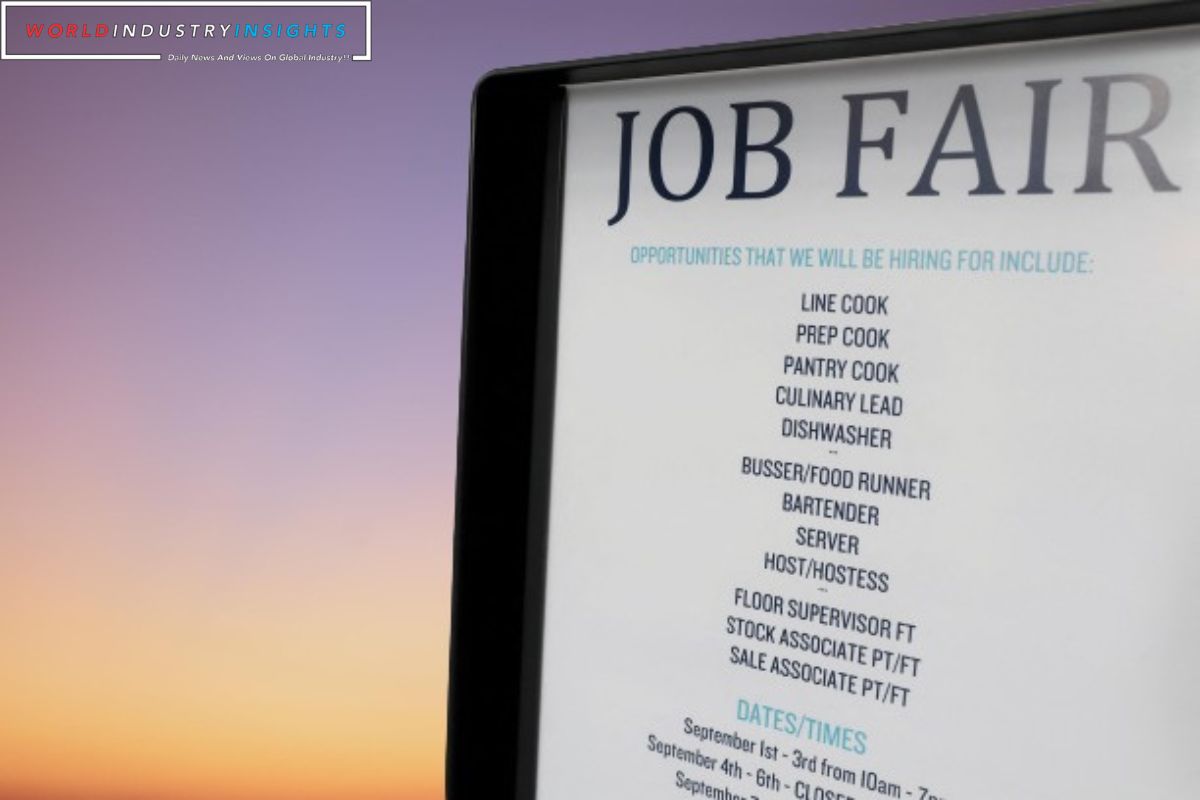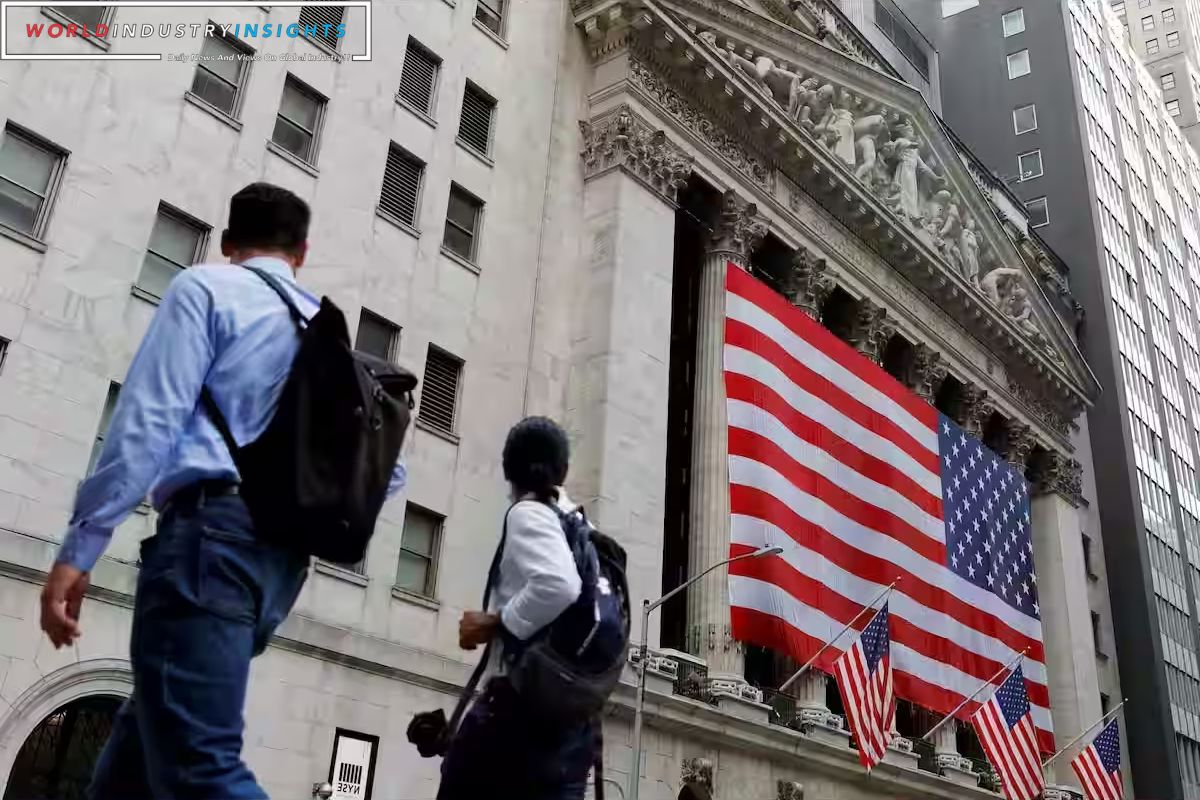Labor Market Resilience in 2023: In the ever-changing landscape of the labor market, the adage ‘expect the unexpected’ holds true. As you delve into the realm of labor market resilience in 2023, you will witness a fascinating defiance of expectations, propelling the economy towards unprecedented growth.
This analytical exploration aims to provide insights and provoke thought, catering to an audience seeking mastery in understanding the intricacies of labor market dynamics. With an active voice and the use of contractions, we delve into the unforeseen resilience that has defied conventional wisdom.
From the concerns of an overheated labor market and inflation worries to the Federal Reserve‘s interest rate hikes, we unravel the intricate web of factors driving this unexpected phenomenon.
Brace yourself for an insightful journey into the labor market resilience that defies expectations and fuels economic growth.
Key Takeaways
- The labor market in 2023 displayed unexpected resilience and continued to grow, defying predictions of mass layoffs.
- Consumer spending played a crucial role in driving job stability and creating a positive feedback loop for economic growth.
- Concerns about potential inflation arose due to rapid wage increases and high demand for workers in an overheated labor market.
- The Federal Reserve’s interest rate hikes did not have the anticipated negative impact on hiring and contributed to the overall strength and stability of the labor market.
Also Read: US Employment Outlook: Navigating a Tepid Labor Market Amidst Lingering Economic Concerns
Unexpected Labor Market Resilience in 2023
You may be surprised by the unexpected resilience of the labor market in 2023. Despite predictions of mass layoffs, the labor market proved to be remarkably robust.
Consumer spending, a major driver of economic growth, accelerated, leading to a continued demand for workers. This surge in demand defied expectations and allowed businesses to expand their workforces. Even the Federal Reserve’s interest rate hikes, which were anticipated to disrupt hiring, didn’t have the anticipated negative impact.
The labor market remained strong and continued to grow, much to the surprise of forecasters. This unexpected resilience speaks to the underlying strength of the economy and the adaptability of businesses. It also highlights the importance of consumer confidence and spending in driving economic growth.
Overheated Labor Market and Inflation Concerns
Despite concerns of an overheated labor market and potential inflation, economists were closely monitoring the situation. The rapid wage increases and high demand for workers had raised apprehensions about a potential wage-price spiral, which could further exacerbate inflationary pressures. The Federal Reserve responded by implementing interest rate hikes to curb inflation and maintain price stability. However, the effectiveness of these measures remained uncertain, as an overheated labor market continued to pose challenges. To provide a visual representation of the situation, consider the following table:
This table highlights the interconnectedness of these factors and the need for a careful balancing act in managing the labor market and inflation concerns. As economists closely monitored the situation, the potential consequences of an overheated labor market and inflation remained a topic of discussion and analysis.
The Federal Reserve’s Interest Rate Hikes
How did the Federal Reserve’s interest rate hikes impact the labor market in 2023, defying expectations and driving economic growth?
Contrary to historical patterns, the labor market has displayed impressive resilience in the face of the Federal Reserve’s 11 interest rate hikes since March 2022. These hikes, which traditionally lead to job losses, haven’t had a significant negative impact on employment in 2023.
While the demand for workers has decreased, it hasn’t reached a level that would result in mass layoffs. Surprisingly, despite a decline in job openings, there are still more job opportunities available than there are unemployed workers. This unexpected outcome suggests that the labor market has adapted and adjusted to the changing economic landscape, demonstrating its ability to withstand external shocks.
The Federal Reserve’s interest rate hikes, instead of hindering the labor market, have contributed to its overall strength and stability, fueling economic growth.
Consumer Spending and Job Stability
Consumer spending has played a crucial role in maintaining job stability. Despite expectations of a slowdown, data on consumer spending has defied projections, contributing to the demand for workers. This remarkable trend is supported by several key factors:
- Strong financial position: Consumers have money or credit available to spend, which stimulates economic activity and job creation. This indicates a healthy level of confidence in the economy and the ability to sustain spending over time.
- Virtuous cycle: The interplay between consumer spending and job growth has created a positive feedback loop. As jobs remain stable, consumers have the means to spend, driving further job stability and economic growth.
- Increased stability: The stability of jobs allows consumers to have a consistent income, enabling them to confidently make purchasing decisions. This stability in employment leads to sustained consumer spending, contributing to the overall health of the labor market.
Consumer spending’s impact on job stability is a testament to the resilience of the labor market and its ability to adapt to changing economic conditions. As consumer spending continues to thrive, job stability is likely to remain a cornerstone of economic growth in the years to come.
Future Outlook and Potential Impact of Interest Rate Hikes
You can expect interest rate hikes to have a significant impact on the future outlook of the labor market in 2023. As the Federal Reserve increases interest rates, borrowing costs for businesses and consumers will rise, which could potentially slow down economic activity and affect job creation. Higher interest rates can lead to reduced investment and business expansion, as companies may hesitate to take on additional debt or make new hires. This could result in a slowdown in job growth and potentially even job losses in certain sectors.
On the other hand, interest rate hikes can also have positive effects on the labor market. Higher interest rates can help to curb inflationary pressures, which can lead to more stable economic conditions in the long run. A more stable economy can provide a solid foundation for businesses to thrive, leading to increased job opportunities and improved job stability.
However, there are also potential drawbacks to interest rate hikes. Higher borrowing costs can make it more difficult for individuals and businesses to access credit, which can hinder investment and economic growth. Additionally, higher interest rates can lead to increased debt servicing costs for those who have variable rate loans, which could put a strain on household budgets and potentially lead to financial stress.
In summary, interest rate hikes have the potential to significantly impact the future outlook of the labor market in 2023. While they can help to control inflation and promote stability, they may also pose challenges to businesses and individuals in terms of borrowing costs and access to credit.
Product Specs:
- Interest rate hikes by the Federal Reserve
- Impact on borrowing costs for businesses and consumers
- Effect on investment and economic growth
Pros:
- Can help control inflation
- Promote stability in the long run
- Provide a solid foundation for businesses to thrive
Cons:
- Higher borrowing costs for individuals and businesses
- Potential hindrance to investment and economic growth
- Increased debt servicing costs and potential financial stress
Conclusion
In conclusion, the unexpected labor market resilience in 2023 has defied expectations and driven economic growth.
Despite concerns of an overheated labor market and inflation, the Federal Reserve’s interest rate hikes have helped maintain consumer spending and job stability.
As we look to the future, the potential impact of these interest rate hikes remains to be seen. However, it’s clear that the labor market’s resilience has been a key driving force in sustaining the economy and defying conventional wisdom.
Our Reader’s Queries
What is the labor market trend in 2023?
The labor force participation rate experienced a decline of 0.3 percentage points in December 2023, with a slight decrease in the prime-age rate (25-54). Despite this, the prime-age labor force witnessed a steady increase throughout the year, with a rise of 0.7 percentage points over the calendar year (0.7 for women and 0.5 for men).
Is there a hiring slowdown in 2023?
In the last quarter of 2023, nonfarm payroll employment growth experienced a slight dip, with a 1.3% annualized increase. December saw the addition of approximately 216,000 jobs. This is a slight decrease from the previous quarter’s 1.7% growth and the average annual growth of 1.7% from 2015 to 2019.
Will the job market get better in 2024?
Economic experts predict that the American labor market in 2024 will be more cautious, competitive, and selective. The job market may prove to be more challenging for job seekers in 2023, particularly after the previous year’s hot labor market.
Will there be a recession in 2023?
The naysayers who influence the public’s view of the U.S. economy have had a tough time in 2023. Despite their predictions of an unavoidable recession, the economy has proven to be remarkably resilient. In fact, growth forecasts have been revised upwards by an impressive 2 percentage points as the year draws to a close.





